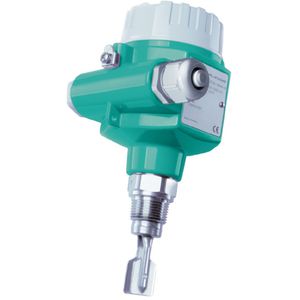
Conductive level switch HR seriesfor liquids
Add to favorites
Compare this product
Characteristics
- Technology
- conductive
- Medium
- for liquids
- Process temperature
Max.: 150 °C
(302 °F)Min.: -40 °C
(-40 °F)- Process pressure
Max.: 40 bar
(580.15 psi)Min.: -1 bar
(-14.5 psi)
Description
The conductivity of a liquid medium may vary widely. Once the liquid reaches the fill limit determined from the installation height of the electrode, the liquid medium closes the DC free alternating current circuit between the two electrodes (or between the container wall and an electrode). A switching signal is produced from the sudden increase in current consumption.
Acids, lyes and solutions containing water are conductive and are detected very well. Aggressive liquids can be detected without problems using probes made from highly-resistant materials. Combustible liquids such as fuels, oils and solvents are nonconductive and cannot be measured by this measurement principle.
Related Searches
- Level limit switch
- Level probe
- Liquid level limit switch
- Liquid level probe
- Protection level level switch
- Float level switch
- Digital output level probe
- Stainless steel level probe
- Solid level limit switch
- Ultrasonic level sensor
- Radar level sensor
- Solid level probe
- IP68 level limit switch
- Hydrostatic level probe
- Float level probe
- Submersible level probe
- Rugged level limit switch
- Capacitive level limit switch
- Tuning fork level switch
- Bulk solids level sensor
*Prices are pre-tax. They exclude delivery charges and customs duties and do not include additional charges for installation or activation options. Prices are indicative only and may vary by country, with changes to the cost of raw materials and exchange rates.




